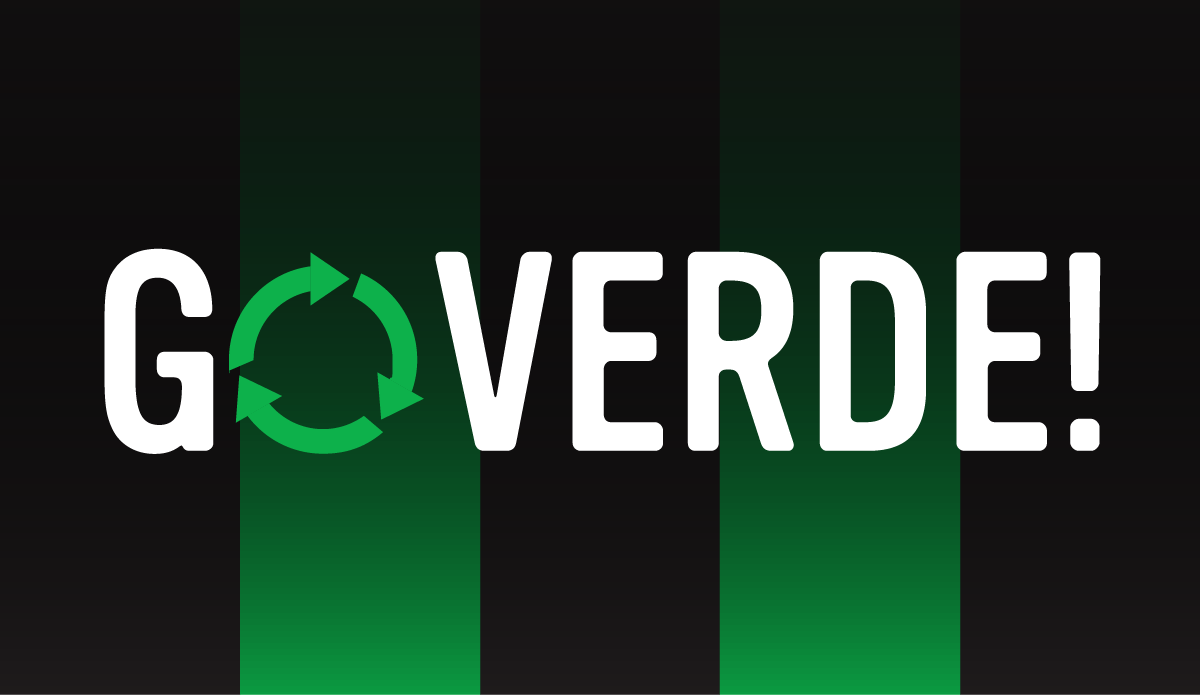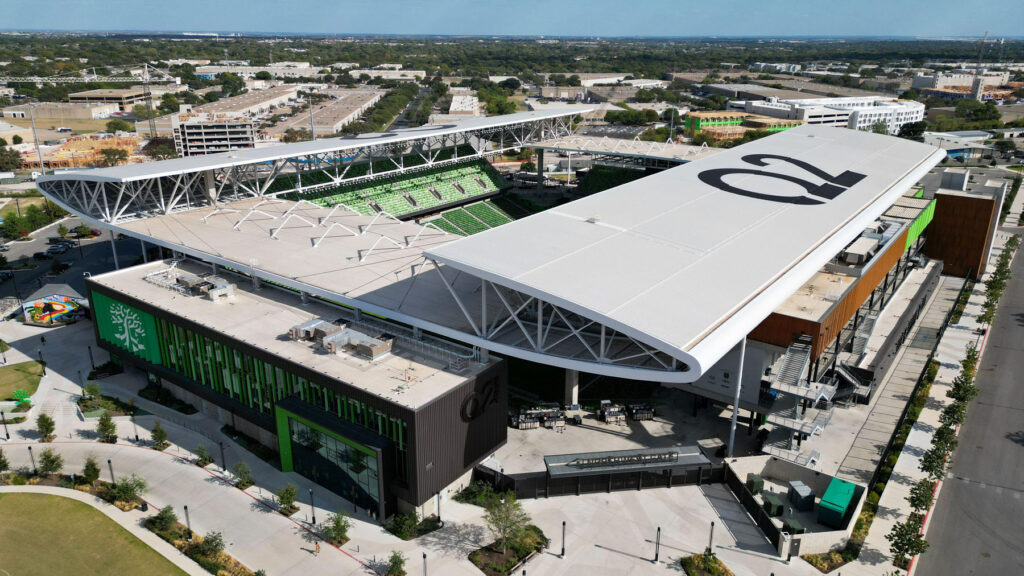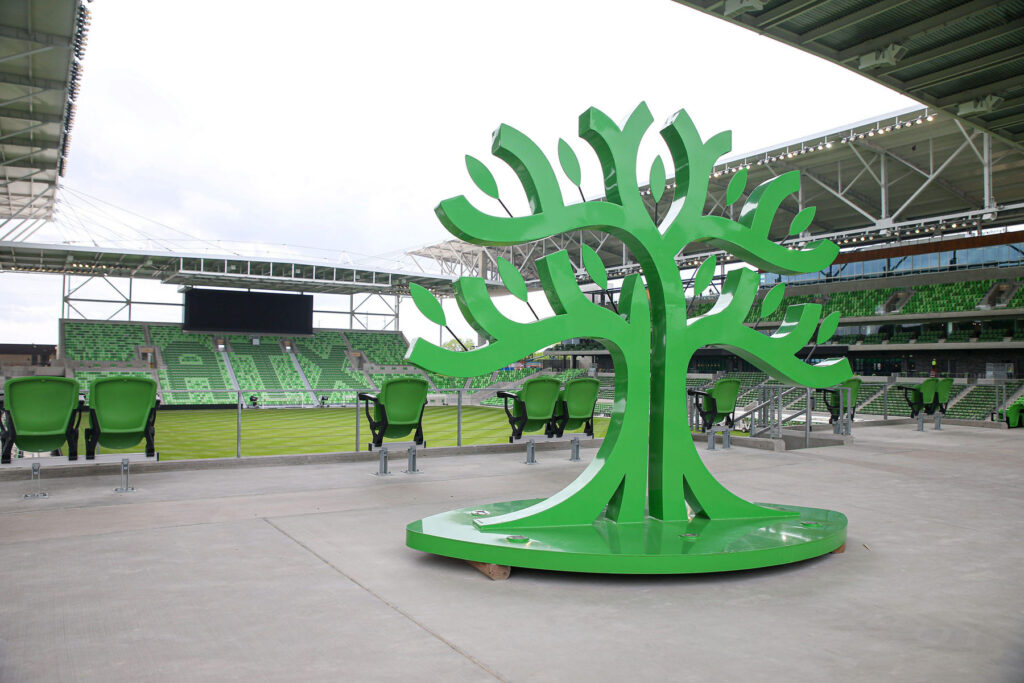The GO VERDE! Football Club
Austin FC's initiative for a sustainable future

2010 marked the formation of Austin’s Sustainability Office. The city’s government website describes sustainability as “…taking proactive steps to protect Austin’s quality of life now and for future generations.” I agree with this simple statement. Like a growing business, a city must have an aim. It sets the expectations for newcomers to join a collective that points in the same direction. While sustainability is not the sole focus of Austin, we can recognize and appreciate the ideal being passed on over a decade later.
GO VERDE!
Austin FC and Q2 Stadium have fully embraced the community’s sustainability efforts with GO VERDE! This platform highlights the sustainability initiatives the football club has implemented ranging from the design of the stadium to reusable drink containers and transportation partnerships.
In 2021, Q2 Stadium was awarded U.S. Green Building Council’s Leadership in Energy and Environmental Design (LEED) Gold certification. LEED certification provides a framework of design that consumes less energy, saves money, produces less carbon emissions and creates a healthier place for individuals. It promotes sustainable strategies in several areas, including energy efficiency, water conservation, materials selection, indoor environmental quality, and site sustainability.
The certification process involves the evaluation of a building’s performance and compliance with specific prerequisites and credits. These prerequisites and credits cover various aspects of building design and operation, such as energy and water usage, waste management, use of environmentally preferable materials, site selection, and occupant comfort.
Obtaining LEED certification demonstrates a commitment to sustainability and provides numerous benefits. It helps reduce operating costs, enhance occupant health and comfort, conserve resources, and reduce greenhouse gas emissions. Additionally, LEED-certified buildings often enjoy marketability advantages and may qualify for incentives and grants from local governments and utilities.

Reduce Plastics
To reduce the amount of plastic water bottles consumed, spectators are encouraged to bring an empty 30-ounce reusable drink container and refill them at any YETI water station throughout the stadium.
Last year, Beyond Plastics released a report detailing the recycling rate of plastics in the US. They estimate in 2021, the recycling rate was between 5-6% – a dismal statistic for a country that seems to have decent infrastructure for collecting plastic waste.
Reduce Waste
The football club, in partnership with Texas Disposal Systems, has 70 Ecostations in the stadium to help fans divert waste. The stations separate compost and recycling and according to the Austin FC website, “fans have diverted 73% of all waste produced at Q2 Stadium during the Club’s first two seasons.” You can check out a game-by-game stat line on waste diversion with the Texas Disposal Systems Waste Diversion Tracker.

Reduce Emissions
To reduce emissions, consider taking advantage of Austin FC’s partnership with CapMetro who increases service during match days to accommodate an increased flow of traffic and provide a safe ride to and from the stadium.
Donation Dollars
This year, Austin FC will donate $100 for every corner kick during home matches to TreeFolks, a local non-profit dedicated to empowering Central Texans to build stronger communities through planting and caring for trees. In addition, the club, along with H-E-B, will donate another $100 to every goal scored to the Sustainable Food Center in support of local food systems, farmers and programs. And finally, Austin Parks Foundation is the beneficiary of sales of Austin FC’s Earth Day Community T-Shirt and Verde Store Round Up from April.
Austin FC has been an exciting addition to the city and fully embraces the sustainability initiatives Austin put forth a decade ago. As we continue to grow as a community, I’m optimistic to see more forward thinking organizations like Austin FC lean into the sustainability concept producing positive change for the future.
Find out more about the GO VERDE! Sustainability Initiative at AustinFC.com.






